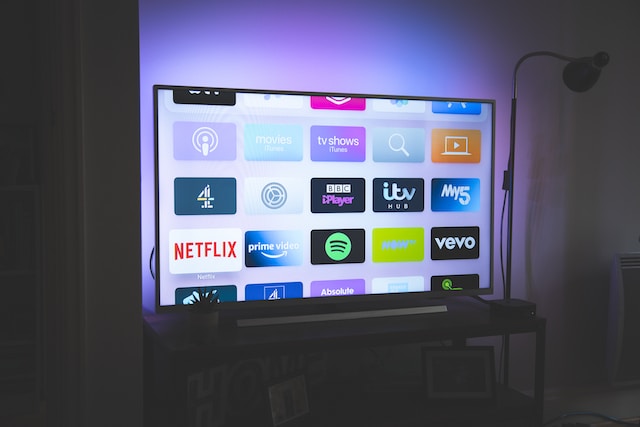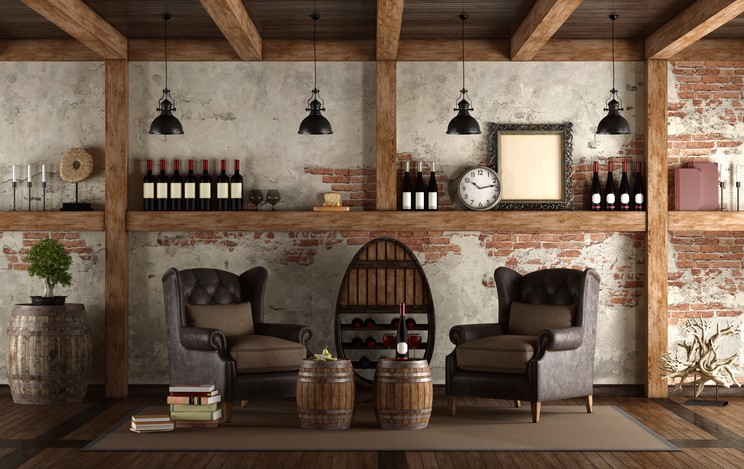Imagine the lights are off, the popcorn is popped, and you’re snuggled into position for another family movie night at home. A home theater system is an enjoyable way to add luxury, excitement, and the ultimate movie-watching comfort to your house. With the ability to customize each aspect of the experience to fit your preferences and needs, home cinemas change the game when it comes to watching your favorite shows, documentaries, home videos, and films. They promote memorable family bonding and exciting entertainment for house guests.
While you may think installing an entire home theater system in your house is out of reach due to cost, setting up a budget-friendly system is easier now than ever. You can save money building the home theater of your dreams and reduce the amount you spend heading to the movie theater every year. Use this comprehensive guide to discover everything you need to know about creating the home theater system of your dreams that doesn’t break the bank.
Planning your home theater
Step one to creating your home theater is to spend time planning the process. While it can be tempting to dive headfirst into an exciting home project, planning your project makes everything smoother and more efficient. This is a vital step to help save money and stay organized.
Location, location, location
The first step is choosing the right space to set up your home theater. There are many factors to consider, with benefits and challenges in each room. Below is a list of the most popular places homeowners set up a home theater:
- Living room or family room: Your living or family room can be a good option, depending on how it’s positioned in your home. If you have windows that let in a lot of natural light, it can negatively affect your movie-watching experience. If you have a dim living room or family room den, it could be the ideal space for a movie theater setup.
- Basement or attic: The basement is a popular idea because natural light is less likely to slip in. It also provides some insulation for an enhanced sound experience. The attic works well for similar reasons, as long as it’s insulated and has comfortable space for seating.
- Spare room: If you have an under-utilized room, turning it into a home theater is a fun way to use the space. The room should be dedicated to your home theater setup. You may need to add some insulation to the room to ensure sound from other nearby rooms doesn’t travel into the theater space.
- Garage: An empty garage – either attached or detached – is a good option for home theaters because you can completely block out natural light and create a soundproofed space without extra steps. Since most garages are blank canvases, it’s easy to transform them into a theater space with everything on your wishlist.
Space requirements
A handful of requirements are vital for setting up your home theater and can’t be ignored. Otherwise, you could end up facing costly repairs and installations. When planning on home theater, consider these requirements:
- Size and layout: The size of your room and how you’ll be able to configure the theater components is a crucial element to figure out before making any purchases. For example, a smaller room will require a short-throw projector, while a larger room will need a long-throw projector with seven or more feet between the projector and screen. In most cases, the larger the screen, the better, but your screen shouldn’t be bigger than what works in the space.
- Access to power outlets: Clear the room and look over your outlet configuration. Avoid installation day stress by knowing what power strips and cord lengths you’ll need to get everything powered safely without causing a mess of cables and cords.
- Ventilation: Sealing your room with installation, soundproofing materials, and light-blocking windows makes proper ventilation even more important. An otherwise well-sealed room can get stuffy, and if you have high-powered audio and video equipment, it will generate a considerable amount of heat. Don’t block any air vents or returns with your setup; leave a clear path for comfortable circulation.
- Acoustics: Sound is a priority in any home theater. To make your sound system pop and perform at its best, the room for your home theater should have solid acoustics. Wall-to-wall carpeting and drapes on the walls help minimize reverb. Next, choose speakers to fit the size of your space. If the room is big and the speakers are too small, you’ll end up with poor audio playback.

Picking out the right setup
The various equipment you choose for your home theater is the heart of the experience. A home theater should have a dynamic picture, transformative sound, and comfortable seating. Nail these components, and you’ll have a space the whole family can enjoy year after year.
Display
A great display transforms an ordinary home theater into an extraordinary one. You’ll be able to pick up the graphics, effects, and cinematography of shows or movies as intended. Luckily, there is an impressive variety of budget-friendly for every display option below::
- Projectors: Home theater projectors require some additional components and setup. Only go with a projector if you prefer how it displays film and you can easily create a space for a screen to display your projections flawlessly. Most new projectors come with a higher price tag but make a good option if you’re not spending much on other setup equipment.
- Smart TV: Easy to use and decked out with convenient features, a smart TV is a great option for a home theater because of its easy user experience. You can find large smart TVs for less than many new projectors, and they come with built-in streaming services, picture enhancements, timers, and quick setup guides.
- Refurbished or used TV: Easy on the wallet while still providing an excellent display, refurbished and used TVs can be the best solution for a budget-friendly home theater. Because TV technology rapidly increases, there are many high-quality used TVs available that are still top-notch and relatively new.
- Computer monitor: A less expensive option with all the graphics bells and whistles you could want, computer monitors are a savvy option for home theaters. With the ever-rising popularity of computer gaming, most modern monitors are decked out with amazing features and a dynamic display that will feel right at home in your theater space.
Once you’ve selected the perfect display for your home theater, proper mounting is essential to achieve the best viewing experience and maintain a clean aesthetic. Wall-mounting your TV saves space and provides a sleek, modern look. When mounting, you want to make sure the center of the screen is at eye level when seated to prevent neck strain. Securely anchor the mount to wall studs or use appropriate anchors for your wall type. If you’re not entirely sure how the installation process works or if you’re dealing with challenging wall materials like brick or plaster, hiring a professional can ensure a safe setup.
Sound system
You don’t need to spend a lot to get a high-quality sound system in your home theater. Many options on today’s market make setup easy and don’t require heavy overspending, including these:
- Soundbars: A loudspeaker that projects audio from a wide enclosure, soundbars are an innovative way to enhance your sound system without multiple components or a difficult setup. They’re much wider than they are tall, enhancing the acoustics of the audio playback and making it easy to mount above or below your display.
- Soundbase: An alternative design from a soundbar, a sound base is designed for a TV to stand on. It creates a stereo effect from a single cabinet, transforming the audio quality of loudspeakers built into flat-screen TVs and elevating your movie experience.
- Home theater in a box: A typical package includes an A/V receiver, center channel speaker, left and right front speakers, left and right satellite surround speakers, and powered subwoofers. Various options have different customizations, but most boxed sets are an affordable way to get a complete system quickly.
- Used or refurbished systems: Soundbars, sound bases, and boxed sets all have affordable varieties. Even more budget-friendly options are second-hand equipment or a refurbished system. Look for certified refurbished options to ensure you’re getting quality components.

Seating options
A stellar seating arrangement is the last crucial component of your home theater setup. Comfortable seating makes all the difference for an enjoyable movie-watching experience in a home theater. There are many cost-effective options for seating, including:
- DIY options: If you have furniture on hand, a comfy old couch in the basement, or a pile of wooden pallets you’ve been looking for a creative way to dress up, consider using them to create DIY custom seating in your theater space. Find innovative ways to use the various components, maximizing the amount of seating so everyone can stretch out and relax.
- Bean bag chairs: These chairs are a great option, especially if kids and teens will be using the room. Bean bag chairs are low maintenance, fun, and easy to rearrange to suit the needs of the moment. They can be set up in any configuration to accommodate a birthday sleepover, stay-at-home date, and everything in between.
- Oversized floor cushions: For a boho-chic vibe, consider oversized floor cushions. They can be stacked, rearranged, and sorted to make endless seating designs for any occasion. Mix and match several styles, occasionally grabbing a few new cushions or keeping an eye out for sales and discounts.
- Buying refurbished furniture: The most wallet-friendly option is buying refurbished furniture. Look for refurbished theater-style seating sections, reclining seats, or even old theater row seats you can dress up. Make sure you view refurbished furniture in person before making the final purchase.
Maximize your streaming options
Streaming services have made it easier than ever to have an impressive library of movie and show options available at the click of a button. However, streaming services require a robust setup with enough bandwidth to keep you from that dreaded endless buffering screen. Here are a few aspects to consider to keep your movie theater streaming capabilities top-notch.
Internet speed is key
Your home internet speed can drastically affect the quality of your streaming content. When you stream movies, TV shows, or other video content, your device needs to download the content from the internet to display it on your screen. If your internet speed is too slow, you may experience a lot of buffering or low-quality video playback. Internet speeds can also affect your ability to access online content or even control your smart devices, bringing movie night to an abrupt halt.
Check with your local provider about the best setup for uninterrupted streaming, and consider spending some of your home theater budget on boosting your internet capabilities. Also, make sure to place your router in or near your home theater room to have direct access when things need to be reset or adjusted.
Shop around streaming services
Choosing the right streaming service on a budget is a great way to keep your costs down while still having access to the content you want. Follow these tips when deciding which streaming services to subscribe to:
- Assess your needs: Consider the content you enjoy most and browse the selections of each streaming service. You may find one or two services provide you with your favorite content, allowing you to focus on those two subscriptions and saving money on services you won’t use frequently.
- Compare prices: Check into each option for payment, including monthly or annual pricing and various perks or add-ons that come with each subscription. Take advantage of free trials to test services and see what you like best and use the most.
- Consider bundle deals: Check your internet or cable provider for deals, packages, and discounts when you bundle services together. You may find a cable or internet provider package that includes your favorite services for a fraction of what you’d pay for each individual service.
- Look out for discounts: Sign up for promo emails and be on the lookout for student discounts, holiday deals, and other promotional pricing.
- Don’t overlook free options: Many free services have a plethora of content without the subscription pricing. Check streaming services, such as YouTube, Crackle, or Pluto TV for the content you’re after before signing up for a paid service.

Consider a streaming device
Streaming media devices connect your home theater to the internet, which allows you to stream content through a streaming service provider or app. Many smart TVs come with a built-in streaming device that doesn’t require separate remotes or added devices to access the content you’re looking for. Other options, such as a Google Chromecast, Apple TV, or Roku, connect to your home theater display via an HDMI port.
There are many budget-friendly options for streaming devices that provide access to popular streaming services like Netflix, Hulu, and Amazon Prime Video, as well as other apps and channels. These devices simplify the streaming process and include a wide range of impressive features, including high-definition streaming, voice-activated remote controls, and access to thousands of channels and apps. They’re available at an affordable price point, allowing you to expand your home theater’s catalog without a hefty price tag.
Setting up the right ambiance
Now that you have your system selected, your location locked down, and your streaming services set up, it’s time to put the finishing touches on your home theater space. Creating the right ambiance takes your home theater from so-so to sensational.
Lighting
Great lighting creates the right environment for a home theater. Many budget-friendly options offer a variety of advantages and customizations, including the following:
- Floor and table lamps: Choose floor and table lamps with opaque shades to provide a glowing effect that doesn’t glare on your display screen. For an added bonus, use smart color-changing light bulbs in your lamps to customize the lighting based on the type of movie you’re about to watch.
- LED strip lights: Reminiscent of the floor lighting in classic movie theaters, LED strip lights provide just enough light to make it easy to move around the room without distracting from the movie. LED bulbs also last longer and don’t add to the heat in your room, which helps if you’ve got high-powered equipment running.
- Dimmer switches: Add dimmer switches to your existing overhead lighting to help set the mood for any occasion. Keep the lights bright when it’s time for your kids to watch a weekend movie, or dim them low when you sit down to watch a horror movie with your friends.
DIY soundproofing
An often overlooked aspect of home theaters, soundproofing can take your home theater to the next level. There are many cost-effective ways to add soundproofing to your home without a lot of hassle, installation work, or extra equipment, such as:
- Heavy curtains: Use heavy curtains to block the light from windows and line the walls in your home theater. It adds an extra layer of sound absorption, cutting down on echoes and enhancing the overall quality of the playback.
- Rugs and carpets: If your room doesn’t already have wall-to-wall carpeting, add an area rug or foam floor tiles to help soundproof the floor. Look for a discount or thrift rug for a wallet-friendly option.
- DIY acoustic panels: Pre-made acoustic panels can be expensive, making the cost of your home theater skyrocket. Instead, opt for a DIY version that works just as well. There are many options and guides available to follow, but the basics include plywood panels, fiberglass screens, insulation, and fabric. Look at your local craft store for discounted fabric to lower the cost even more.
- Furniture: The most budget-friendly option for soundproofing is to use items you already have to create barriers. Consider lining the wall with bookshelves to minimize echo and fill the display shelves with your DVD collection, movie memorabilia, and more.
Manage cable clutter
Home theaters inherently involve a lot of wiring and cables, so you’ll want to plan for a solution to manage them. This will help with your home theater’s aesthetics and keep your system and included components working as smoothly as possible. To manage your cables, follow these tips:
- Use your surroundings: The easiest, least expensive option is to use your surroundings, furniture, and decorations to help manage and hide your cables. Tuck cables behind your couch or underneath your entertainment system to keep them safe and out of sight.
- Cable management boxes: Cable management boxes help bring a sense of order to your cords and cables, especially directly behind or underneath your display, where cables all seem to converge.
- Going wireless: If your budget allows, going wireless helps reduce the number of cables in your home theater, removing the need to create a cable management system. There are many budget-friendly wireless options available. You don’t have to go wireless for your whole system, but one or two components will noticeably reduce the number of cords.

The most important aspect of a budget-friendly home theater space is to create an environment you’ll enjoy spending time in with your family and guests. Find innovative ways to use things you already have, look for specials and deals wherever they’re available, and turn to simple DIY solutions to reduce your overall budget. You don’t have to spend an arm and a leg to have a luxury home theater. Follow this guide to discover the best solutions for cost-effective home theater setups. Then, stock up on your favorite movie snacks and have a cozy night in.




